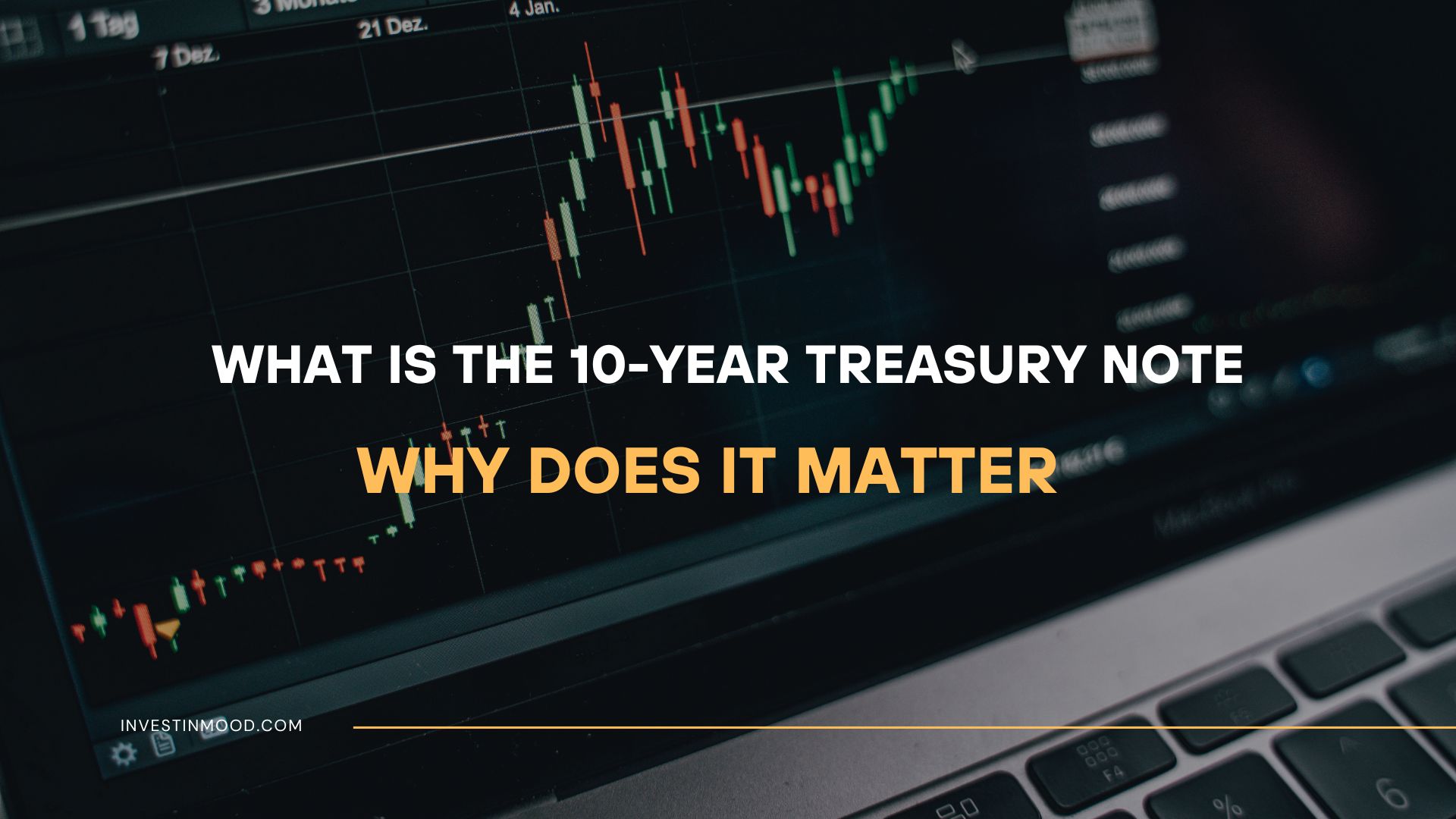
What is the 10-Year Treasury Note and Why Does It Matter
The 10-Year US Treasury Note is a cornerstone of the global financial system, representing a loan to the US government. Its yield is the world’s most critical interest rate, influencing everything from mortgage rates and corporate borrowing costs to stock market valuations. For investors in the US, UK, Canada, and Australia, understanding the “10-year” is essential for making informed decisions across all asset classes.
Summary Table
| Aspect | Detail |
|---|---|
| Definition | A debt obligation issued by the U.S. Treasury Department with a maturity of ten years, paying semi-annual interest. |
| Also Known As | The 10-Year, U.S. 10-Year, Benchmark Treasury |
| Main Used In | Economic Forecasting, Portfolio Management, Risk Assessment, Interest Rate Trading |
| Key Takeaway | Its yield serves as a vital benchmark for global interest rates and a key barometer of market sentiment toward economic growth and inflation. |
| Formula | N/A |
| Related Concepts |
What is a 10-Year Treasury Note
A 10-Year Treasury Note is a loan you make to the United States government. In exchange for your money, the U.S. Treasury promises to pay you a fixed interest rate (the coupon) every six months for ten years and return the full face value (principal) when the note matures. Because it’s backed by the full faith and credit of the U.S. government, it’s considered one of the safest investments in the world. This safety is paramount, making it the foundational risk-free rate against which all other investments are measured.
Key Takeaways
The Core Concept Explained
The core concept revolves around the inverse relationship between a Treasury note’s price and its yield. When you buy a $1,000 note with a 4% coupon, you’ll get $40 per year. If after you buy it, economic news causes investors to sell notes, the market price might drop to $900. The new buyer still gets the same $40 annual payment, but now that $40 represents a yield of 4.44% ($40 / $900). Thus, as the price fell, the yield rose. This dynamic is the heartbeat of the bond market.
- High Yield: Generally indicates high inflation expectations, strong economic growth, or higher perceived risk in lending to the government.
- Low Yield: Typically signals low inflation, weak growth forecasts, or a “flight to safety” where investors seek shelter from stock market volatility.
How the 10-Year Treasury Note is Priced
While there’s no single “formula” for its price, it is determined by supply and demand at auction and in the vast secondary market. The key variables are:
- Face Value: The amount paid at maturity (e.g., $1,000).
- Coupon Rate: The fixed annual interest rate, set at the initial auction.
- Market Price: The price investors are willing to pay for the note, which fluctuates daily.
- Yield to Maturity (YTM): The total return anticipated if the note is held until it matures. This is the most important number to watch.
The Auction Process
The U.S. Treasury issues new 10-year notes through a regular auction schedule. Institutional investors submit competitive bids, and the notes are sold to the highest bidders. The final price and coupon rate are set based on these bids. Individual investors can participate non-competitively, agreeing to accept the yield determined at auction. You can do this directly through TreasuryDirect.gov, the official website of the U.S. Treasury.
For investors in the US, UK, Canada, and Australia, understanding this auction process is key to accessing this asset class directly. The yields set in these US auctions have a ripple effect, influencing government bond yields in markets like the UK’s Gilts and Australia’s Government Bonds.
Why the 10-Year Treasury Note Matters to Everyone
The 10-Year yield is not just for bond traders; it’s a vital sign for the entire economy.
- For Homebuyers: It’s the primary driver of 30-year fixed mortgage rates. When the 10-year yield climbs, mortgage rates typically follow, making housing more expensive. For example, a UK bank pricing a long-term fixed-rate mortgage will heavily reference the 10-year Gilt yield, which is influenced by the U.S. 10-year.
- For Investors: It’s the “risk-free” benchmark. When evaluating a stock, the 10-year yield is used in valuation models like the Discounted Cash Flow (DCF). A higher yield makes future company earnings less valuable today, often putting downward pressure on stock prices.
- For the Federal Reserve: The Fed closely watches the 10-year yield as a measure of whether its monetary policy is effectively transmitting through the economy. A rising yield curve can signal that the market believes their inflation-fighting measures are working.
- For Corporate America: Companies issue long-term debt priced at a “spread” over the 10-year Treasury. A lower yield means cheaper borrowing costs for expansion and hiring.
How to Use the 10-Year Treasury in Your Strategy
- Case 1: Gauging Economic Health (The Yield Curve): Monitor the spread between the 10-Year and the 2-Year Treasury yield. An “inverted” yield curve (where the 2-year yield is higher than the 10-year) has been a reliable, though not perfect, precursor to recessions. This is a crucial signal for adjusting your portfolio’s risk exposure.
- Case 2: Portfolio Diversification & Safe Haven: During stock market crashes or geopolitical crises, allocating a portion of your portfolio to 10-Year Treasuries (or ETFs like IEF or VGIT) can provide a hedge, as their prices often rise when stocks fall.
- Case 3: Income Generation in a Low-Rate Environment: While yields fluctuate, they can provide a steady, government-guaranteed stream of income. Laddering maturities by buying notes in successive years can help manage reinvestment risk.
- Extreme Safety Backed by the full faith and credit of the U.S. government, it is considered virtually free of default risk.
- High Liquidity It is the most liquid debt security in the world, allowing for easy buying and selling.
- Portfolio Stabilizer Its negative correlation with stocks during crises makes it an excellent diversifier.
- Predictable Income The semi-annual coupon payments provide a stable, government-guaranteed cash flow.
- Interest Rate Risk If market interest rates rise, the price of your existing note will fall, and a 10-year duration implies high sensitivity.
- Inflation Risk If inflation outpaces the note’s yield, the real value of your interest and principal is eroded.
- Low Yield Potential During periods of aggressive monetary easing, yields can be very low, offering minimal income.
- Opportunity Cost Capital allocated here may miss out on higher returns from other asset classes like equities.
The 10-Year Treasury for International Investors
For investors outside the US, particularly in the UK, Canada, and Australia, the US 10-Year yield is a crucial variable in currency and global asset allocation decisions.
- Currency Impact (USD): Higher US yields attract foreign investment, increasing demand for the US Dollar. This can weaken other currencies like the British Pound (GBP) or Australian Dollar (AUD), impacting the returns of international holdings for US-based investors and vice-versa.
- Relative Value Analysis: Global fund managers constantly compare the yield of the US 10-Year to their domestic government bonds (e.g., UK Gilts, Canadian Government Bonds, German Bunds). If US yields are significantly higher for perceived similar risk, it can trigger a capital flow out of other markets and into US assets.
- Hedging Considerations: International investors holding US assets often use the 10-year Treasury futures market to hedge their exposure to fluctuating US interest rates.
Trading Strategies Around the 10-Year Treasury
Beyond buy-and-hold, sophisticated traders use the 10-year in various strategies.
- The Curve Trade: This involves taking a view on the shape of the yield curve. A common “flattening” trade would involve selling the 10-year note (betting its yield will rise relative to the 2-year) and buying the 2-year note. A “steepening” trade is the reverse.
- Asset Allocation Tilt: The 10-year yield can signal when to overweight or underweight stocks vs. bonds. A sharply rising yield may suggest reducing duration risk in a bond portfolio. Conversely, a yield spike during a crisis can be a buying opportunity for bonds as a safe haven.
- Using Treasury ETFs: Traders can use ETFs like TLT (long-term 20+ years) and IEF (7-10 years) to express views on interest rates without trading futures. For a direct, leveraged bet, products like the iShares 10+ Year Investment Grade Corporate Bond ETF can be used, though they carry higher risk.
The 10-Year Treasury Note in the Real World
A perfect recent case study is the period of 2022-2023. In response to multi-decade high inflation, the Federal Reserve began a series of aggressive interest rate hikes. This had a direct and dramatic impact on the 10-Year Treasury.
- The Setup: In late 2021, the 10-year yield was around 1.5%. Inflation was rising, but the Fed was still describing it as “transitory.”
- The Action: As inflation data consistently surprised to the upside, the Fed signaled a hawkish pivot. The market rapidly repriced its expectations for future interest rates.
- The Result: The yield on the 10-Year Treasury note skyrocketed, crossing 4% for the first time since 2008. This massive move had immediate consequences:
- Mortgage rates in the US surged above 7%, crushing refinancing activity and cooling the housing market.
- Stock valuations, particularly for growth and tech companies, came under intense pressure as the discount rate for future earnings increased.
- The US Dollar strengthened significantly, as higher yields attracted foreign capital.
This episode clearly demonstrates the 10-year yield’s role as a real-time barometer of monetary policy and inflation expectations.
Conclusion
Ultimately, the 10-Year Treasury Note is far more than a simple government bond; it is the pulse of the global financial system. Understanding its movements provides critical insight into market expectations for growth, inflation, and central bank policy. While it offers unparalleled safety and liquidity, it is not without risks, primarily from rising interest rates and inflation. By incorporating the 10-year yield into your analysis—using it to assess the economic climate, diversify your portfolio, and gauge the cost of borrowing—you empower yourself to make more informed, strategic financial decisions. Start by adding it to your watchlist and observing its relationship with other assets you own.
Ready to monitor the benchmark for yourself? Tracking the 10-Year yield is a fundamental step for any serious investor. We recommend using a platform with real-time data and advanced charting capabilities.
How the 10-Year Treasury Note Relates to Other Concepts
A common point of confusion is the difference between the various types of U.S. government debt.
| Feature | 10-Year Treasury Note | 30-Year Treasury Bond |
|---|---|---|
| What it is | A medium-term debt obligation. | A long-term debt obligation. |
| Maturity | 10 Years | 30 Years |
| Interest Rate Risk | Moderate (Sensitive) | High (Very Sensitive) |
| Primary Use | Economic benchmark, medium-term safety. | Long-dated safe asset, inflation hedge (via TIPS). |
Related Terms
- Yield Curve: The line plotting the yields of Treasuries across different maturities. The 10-year point is its most watched segment.
- Duration: A measure of a bond’s sensitivity to interest rate changes. The 10-Year Note has a duration of roughly 7-9 years, meaning a 1% rise in rates could cause a ~7-9% price drop.
- TIPS (Treasury Inflation-Protected Securities): Government bonds where the principal adjusts with inflation. The difference in yield between a regular 10-Year Note and a 10-Year TIPS is called the “breakeven inflation rate,” a market-based gauge of inflation expectations.
Frequently Asked Questions
Recommended Resources
- TreasuryDirect.gov: The official site to buy U.S. Treasuries directly.
- Federal Reserve Economic Data (FRED): The best source for historical 10-Year yield data.
- U.S. Treasury Website: For official announcements on auction schedules and results.
- Investopedia: 10-Year Treasury Note: For additional definitions and explanations.





